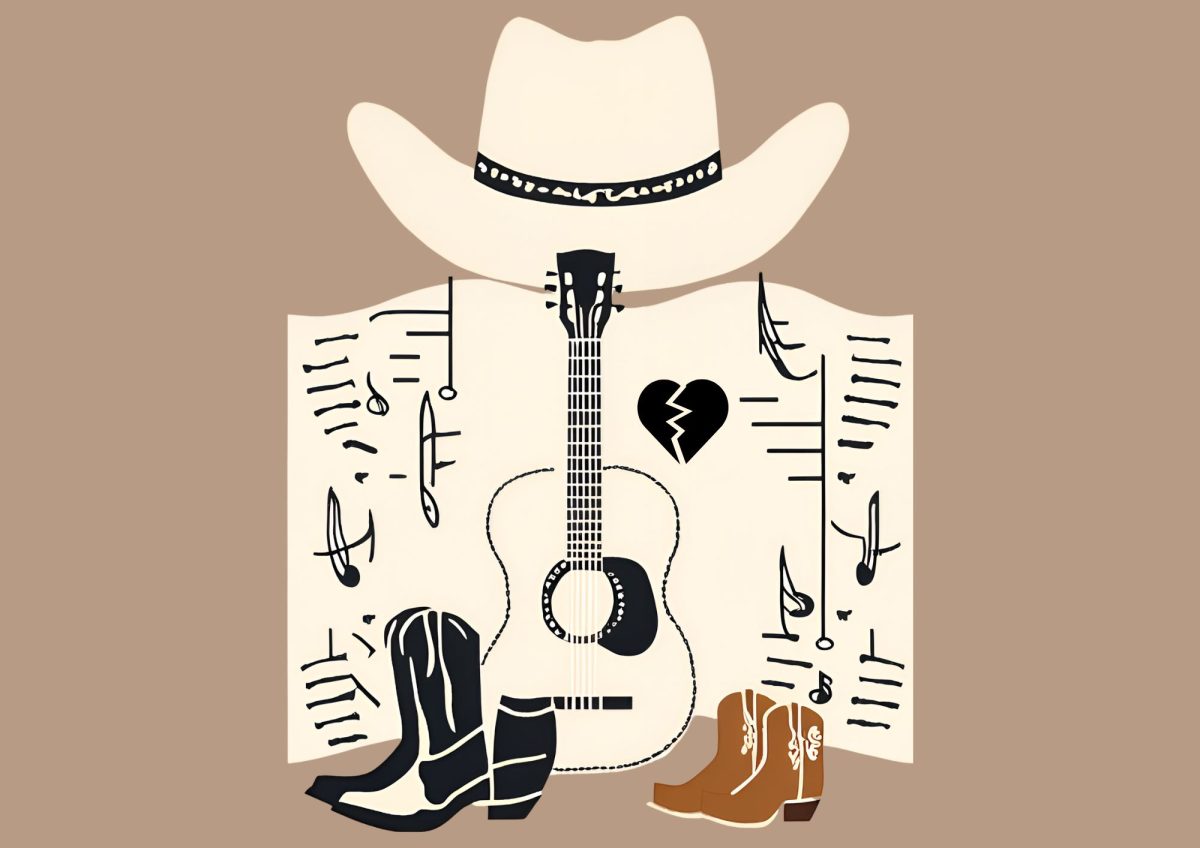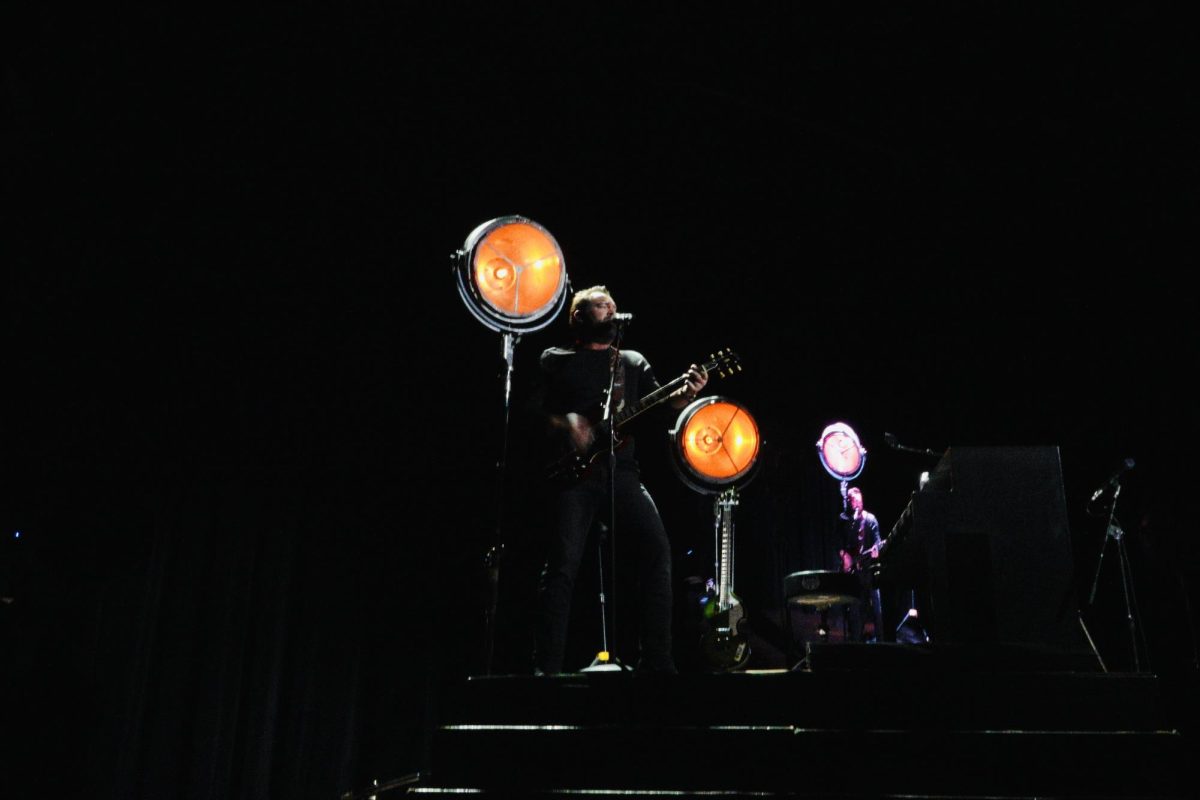Bourbon, Ford trucks, blue jeans, heartbreak and Tennessee landscapes — these themes define country music, a genre built on struggle and authenticity. Its stories of resilience, from bar fights to ballads, reflect the hardships faced by its artists, from humble beginnings to the challenges of fame. But why does country music seem uniquely defined by pain? Are country artists more damaged than their counterparts in other genres? A girl in my class once remarked, “Jason Aldean is a horrible person,” only to have someone reply, “Well, aren’t they all?” The remark reflected a broader perception of controversy in the genre.
Roots of hardship
Country music’s storytelling tradition has always emphasized themes of hardship and heartbreak. According to music historian Bill Malone, the genre’s roots lie in the struggles of rural America, where economic hardship, personal turmoil and resilience shaped both the artists and their songs. This historical connection remains central to country music’s identity, offering a reflection of real-life struggles that resonate across generations.
“I think country music, in many respects, is America’s truest music because it comes closer to really reflecting and voicing the aspirations, the fears, the prejudices of average people,” Malone said. “There’s always been a very strong dose of both reality and fantasy in country music., and I think that’s important to people.”
The price of authenticity
This duality — both reality and fantasy — explains why country music feels so uniquely defined by pain. It’s a genre where struggle isn’t just a lyrical motif but a lived experience for many of its artists. Their hardships, whether real or romanticized, create a powerful bond with listeners who find solace in the music’s raw honesty.
As someone who’s always loved country music and now lives in Nashville, I feel so fortunate to be surrounded by the city that inspires today’s biggest artists. I’ve come to understand the cultural and personal depth of this music. From the SEC football games to the humbling legacy of the Vols, I’ve learned how deeply these roots run. Sitting at Dierks Bentley’s bar on Broadway, I took it all in: the energy, the music, the triumph. How incredible it must be to make it so big in Music City that you own a five-story rooftop bar on one of the liveliest streets in the U.S.. Yet, amid the glitz and glamour, recurring themes in country music — hardship, heartbreak and addiction — persist.
Luke Combs captures the genre’s essence in his song “Forever After All” with the line: “A cold beer’s got 12 ounces / A good truck’s got maybe 300,000 / You only get so much until it’s gone.” This lyrical simplicity captures a common thread in country music: loss. From the songs to the artists, the genre seems steeped in stories of heartbreak and survival. This extends to the public lives of the stars, whose scandals often become headlines ranging from Miranda Lambert’s fiery relationships to Morgan Wallen’s controversies and arrests. Even legends like Johnny Cash and Tim McGraw battled addiction and run-ins with the law, embodying the genre’s rugged appeal.
Symbols
I have never heard a country song that didn’t reference Lucchese or Tecova boots, Stetson hats, Wrangler jeans or whiskey. These symbols form a language of authenticity. My introduction to country music came early when my babysitter gave me Taylor Swift’s debut album at six years old. We played that CD on a loop and my love for her music, and country music more broadly, took root. At the barn where I grew up horseback riding, country songs played over the loudspeakers as I tacked up my horse, embedding the sound of twang and storytelling into my everyday life. Luke Bryan’s “Sangria” or Dierks Bentley’s “Somewhere on a Beach” would fill the air. Even at such a young age, I noticed how so many songs seemed to orbit around drinking and heartbreak.
A friend of mine from high school, Natalia, jokingly summed up the genre. “Every song is about how my wife left me, my truck broke down, my dog died and I’m going to drink away all the pain,” she said. She wasn’t entirely wrong. Yet, this irony struck me –– country music, born from simplicity and struggle, had become the soundtrack for elite hobbies like mine. I listened to these songs in settings far removed from their origins: in barns housing horses worth more than luxury cars, among bachelorette parties playing pretend cowgirls for a weekend in Nashville or as Yellowstone fans projected their fantasies onto Montana landscapes. The blend of rugged and refined mirrors the paradoxes within the music itself.
The double-edged sword of fame
Country music thrives on turning pain into art. While other genres polish or rebel against struggle, country music sits with it, transforming hardship into a shared experience. But why do so many damaged souls gravitate toward this genre? Perhaps the answer lies in the artists’ socioeconomic backgrounds. Many come from small towns and working-class roots, where hardship is not the exception but the norm. The genre’s women, too, navigate this space, pushing against its conventions while remaining tethered to its roots. Miranda Lambert’s “Mama’s Broken Heart” doesn’t just tell a story of heartbreak; it’s an anthem of defiance, rejecting the expectation that women must endure pain with quiet dignity. Escaping through music, only to reflect that struggle back in song, creates a deep connection with listeners. We may never experience the pain of a cheating lover or the loss of a family farm, but country music makes us feel as if we’re part of that story.
This brings me back to the offhand comment about Jason Aldean. Country music’s stars often stumble publicly. Turning their pain into art is a double-edged sword: it endears them to fans but also amplifies their struggles. The themes that fuel their success are often their undoing.
Sitting here in Nashville, I look at my worn Ariat boots. They’ve danced on tabletops at Broadway bars but also mucked stalls back home. This contrast mirrors country music: a genre built on grit but celebrated in glitter. Country music doesn’t just tell a story — it invites us to live it, even if only for three minutes at a time.






